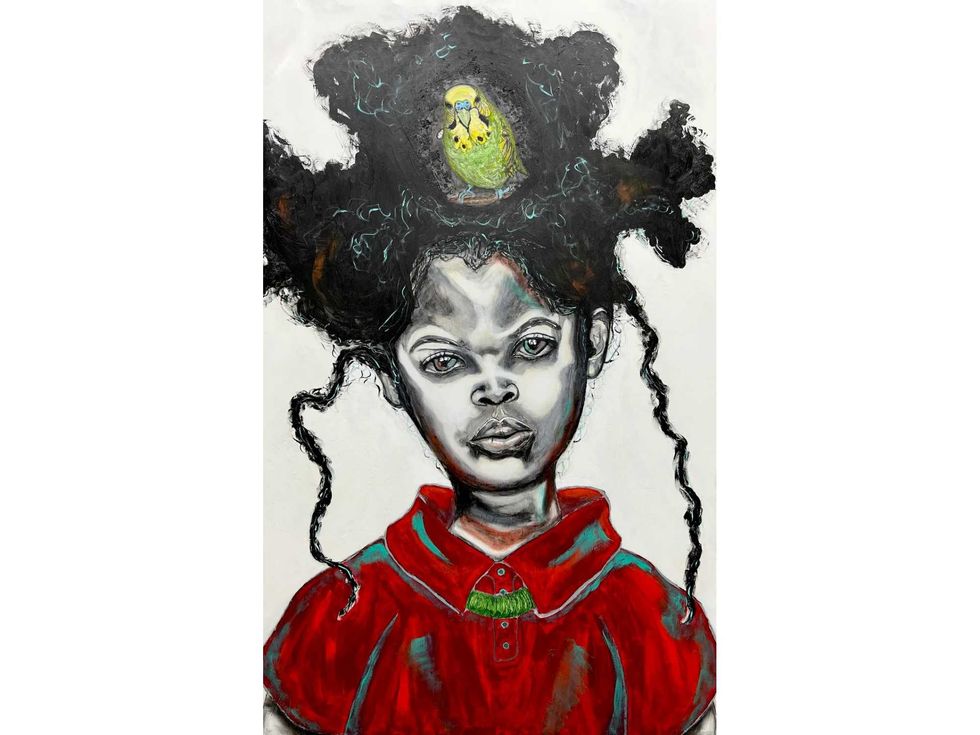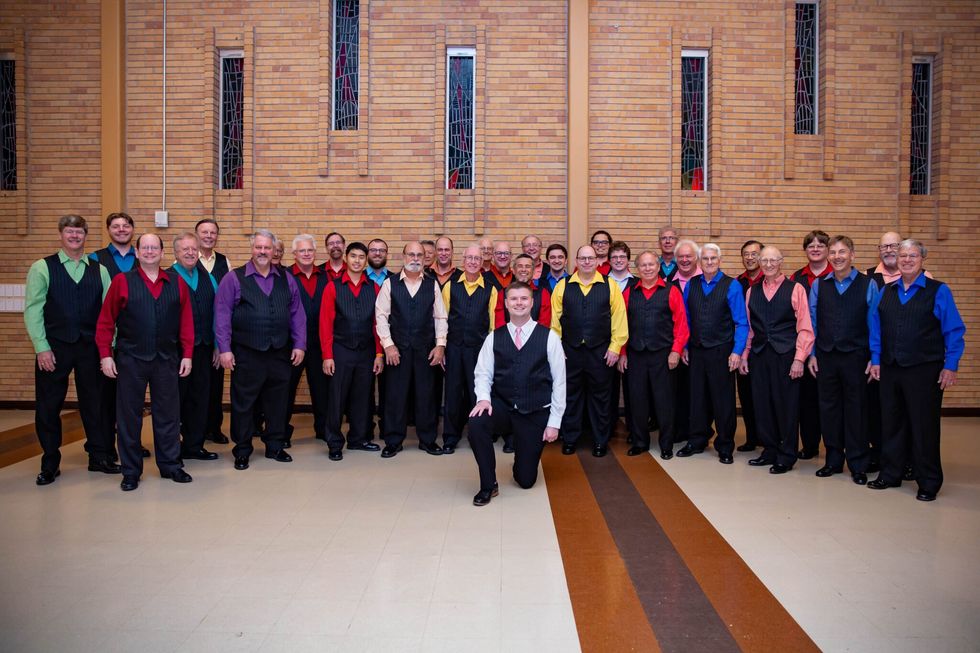Reaching new heights
A concert that will go over your head: Cirque de la Symphonie puts a circus inthe air
 Janice Martin
Janice Martin Alexander Streltsov in his "Flying Silk" act
Alexander Streltsov in his "Flying Silk" act Hand-balancing expert Vladimir Malachikhin
Hand-balancing expert Vladimir Malachikhin Strongmen Jarek and Darek
Strongmen Jarek and Darek
Michael Krajewski readily admits he sometimes has trouble keeping the orchestra's eyes on him, especially when more exciting things are happening over their head. This weekend, Houston Symphony goes the way of the circus with their second rendition of Cirque de la Symphonie, an orchestrated aerial dance extravaganza.
Really, why would they look at him, when they can gaze at uber-fit sequined acrobats? "I kid them all the time when I can see their eyes darting all over the place following the action," says Krajewski, Houston Symphony's principal pops conductor.
Not a circus-loving kid, Krajewski became a fan during the Cirque du Soleil era. "I like their approach. It's more creative, and meshes well with symphonic music," he says. Krajewski collaborated with a small cadre of performers and Houston Symphony to get the show on the road, or really, the air.
"I looked at DVDs and came up with some music I thought would work well. Orchestral music really lends itself to this kind of work." A back and forth process between Krajewski and the performers eventually led to the first incarnation of the show, which premiered on Houston soil in 2006.
"We cobbled this thing together in 2006. When we look back, we chuckle how we didn't really know what we were doing. It was a bit crude," he says. "I have been fortunate to conduct the show at several orchestras." Today, the show is a polished gem, and in huge demand by symphonies all over the country.
So how does a symphony orchestra share a stage with a group of acrobats? "The stage is big enough and it all seems to fit," Krajewski insists. "They fly over the orchestra and the audience. Sometimes, I can feel the wind over my head as they swoop by."
The glue of the operation may very well be Janice Martin. She prefers to play her violin from about 20 feet. in the air.
"I used to be afraid of heights," Martin admits. "Tall buildings still make me crazy."
The musician/slash aerialist will be on double duty as a soloist and a performer. "I was fascinated by combining movement with playing the violin," Martin says. "I felt compelled to get up in the air."
Martin brings dance training, sky diving and scuba diving to the aerial table as well. "All of those experiences opened my eyes to the third dimension." And if you are not yet impressed with Martin, there's more. She plays the guitar, trumpet and piano and can sing. (Although don't expect her to play the piano from the air.)
Although Martin is trained in many forms of aerial work, the silks are her favorite. "It requires upper body and abdominal strength, flexibility, balance, grace and timing," the Juilliard-trained musician says. "I love the beauty of fabric flowing in the air."
As for fitting in all the practice on all that she does, Martin enlists that hard-core musician discipline. "I learned to prioritize," she says. "The circus arts became my way of 'hanging out' with friends. Sorry for the pun."
Keeping on top of the music is not a problem either. "There are only a few moments in the piece where I need to see Michael. As a soloist, I have the luxury of allowing the orchestra to accompany me, rather than the other way around."
Martin is joined by veteran aerialists Shana Lord, Alexander Streltsov, Vladimir Tsarkov, Aloysia Gavre, Vladimir Malachikhin, Jarek and Darek — a hand-balancing act team from Warsaw Poland whose real names are Jaroslaw Marciniak and Dariusz Wronski,.
While in development, there were some concerns that the performers in Cirque de la Symphonie would overpower the symphony. Lithe acrobats wearing glittery get-ups flying through the air tend to grab our attention. With music by Rimsky-Korsakov, Bizet, Saint-Saens, Ravel, V. Monti and J. Williams, Krajewski insists it's not a problem.
"The music enhances what the performers are doing, it's the sum of both parts," he says.
"We created something new." Martin agrees. "Top-notch performers with the magnificent Houston Symphony. What's not to love?"





